This post may contain affiliate links. Please read our policy page.
To create an eco-friendly bedroom, I start with organic cotton bedding, which is safer and softer. I then assess my current items and prioritize sustainable furniture, like reclaimed wood and bamboo. I choose energy-efficient lighting and incorporate indoor plants for better air quality. Upcycling old decor adds a personal touch while reducing waste. By making these choices, I enhance my space’s comfort and sustainability, and you’ll discover even more tips on how to achieve this!
Understanding Organic Cotton and Its Benefits
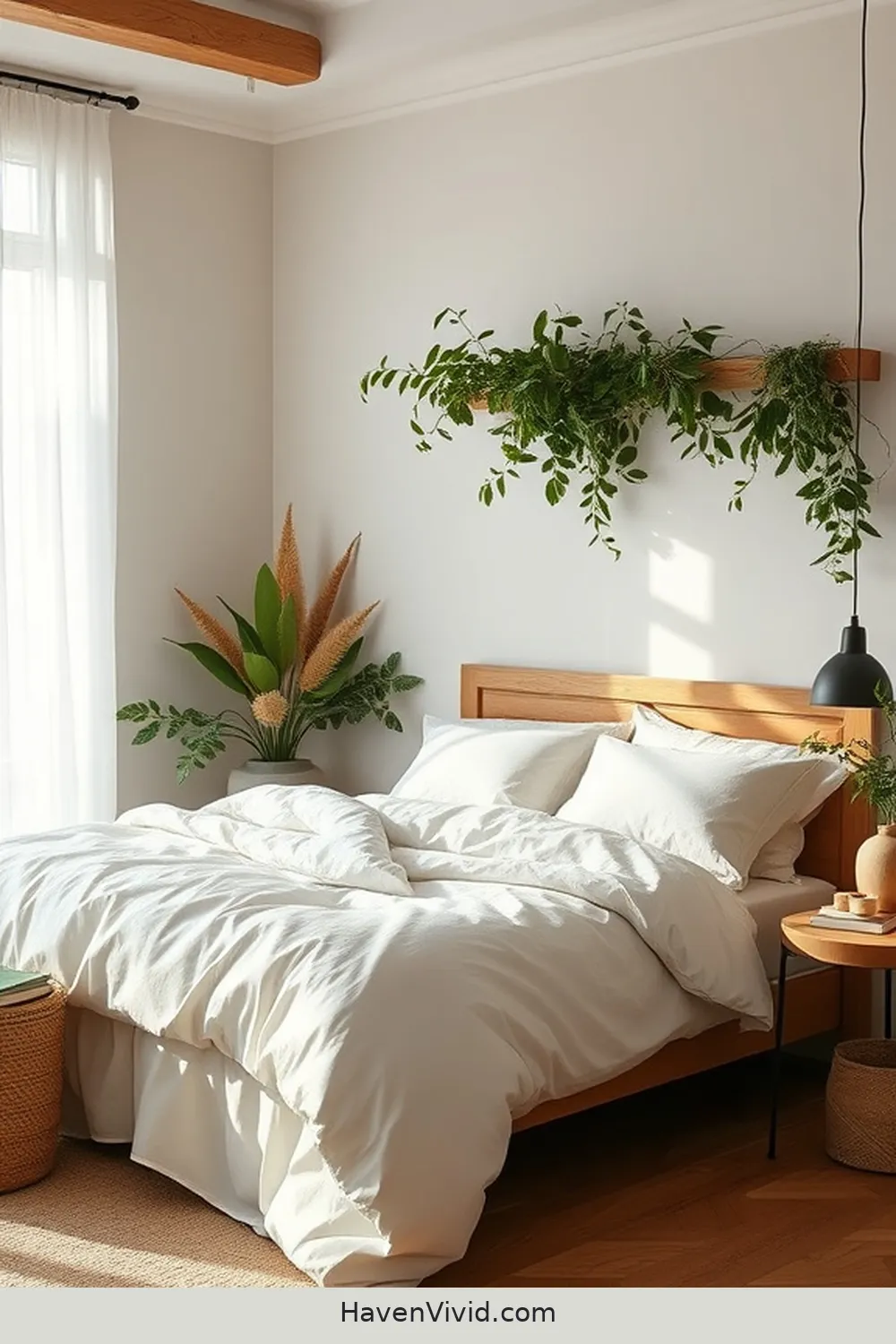
When I first learned about organic cotton, I was surprised by how much it can impact both our health and the environment. Unlike conventional cotton, organic cotton is grown without harmful pesticides or synthetic fertilizers. This means it’s not only gentler on the planet but also safer for us.
I discovered that organic cotton farming practices help maintain soil health and reduce water usage, making it a sustainable choice. Plus, products made from organic cotton are often softer and free from toxic chemicals, which is a huge plus for anyone with sensitive skin.
Assessing Your Current Bedroom Setup
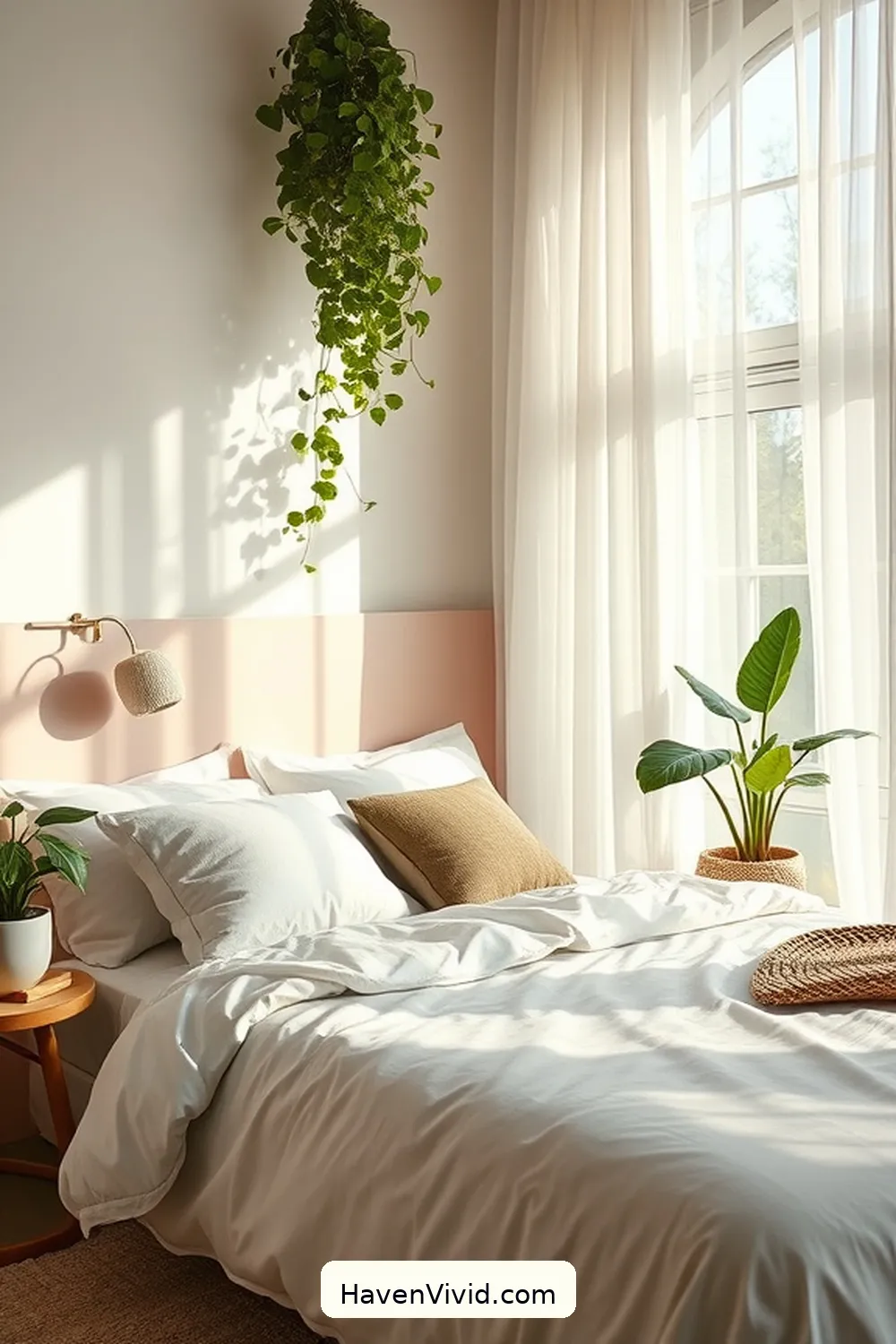
After embracing organic cotton, I realized it was time to evaluate my entire bedroom setup for eco-friendliness. I started by listing what I had and identifying areas for improvement. Here’s a quick overview of my assessment:
| Item | Eco-Friendly Rating | Action Needed |
|---|---|---|
| Mattress | Low | Consider organic option |
| Pillows | Medium | Replace with organic |
| Sheets | High | Already organic |
| Furniture | Medium | Opt for reclaimed wood |
| Lighting | High | Use LED bulbs |
This table helped me visualize my current situation and prioritize changes. By making these adjustments, I’m on my way to creating a more sustainable and healthy bedroom environment.
Choosing Organic Cotton Bedding
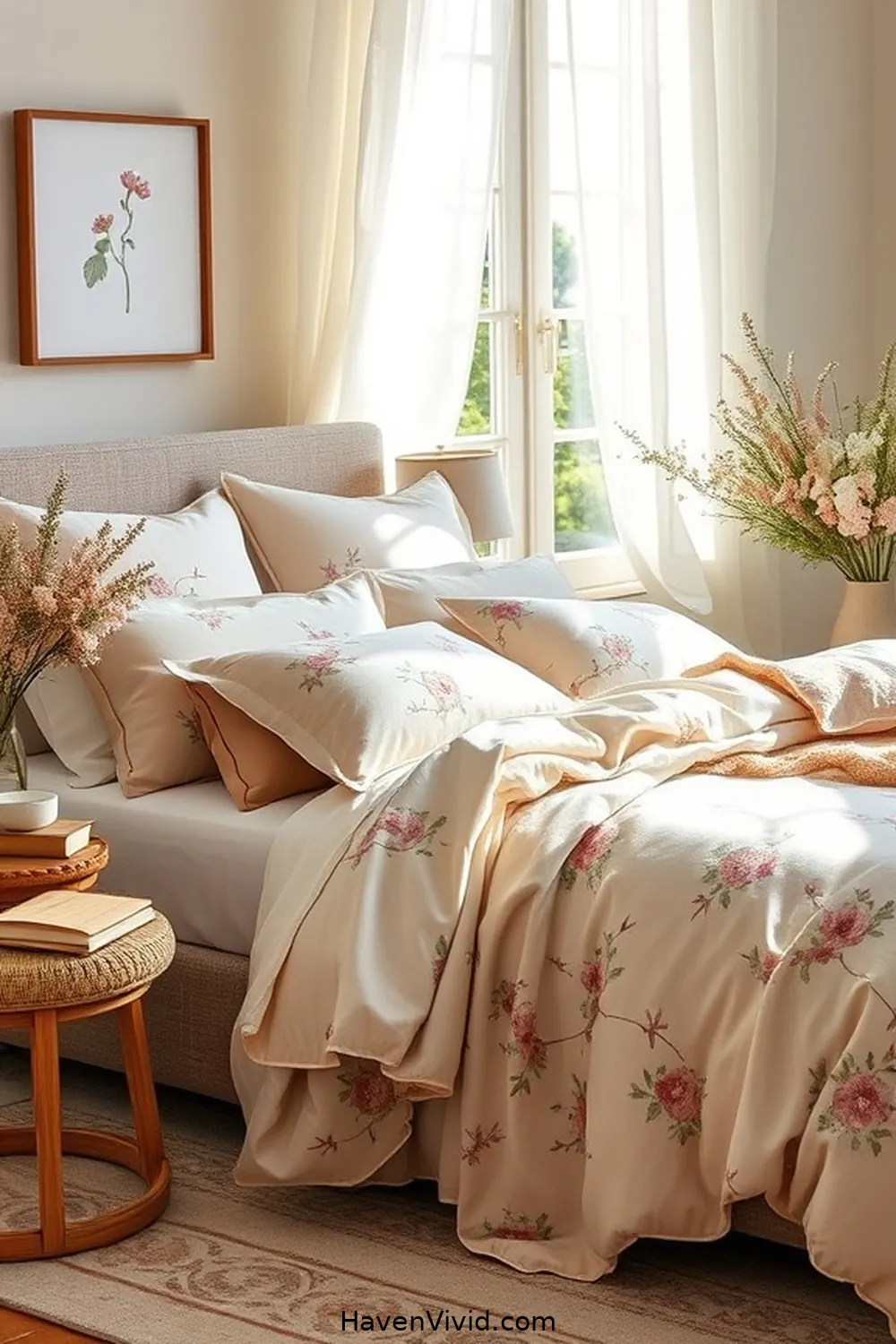
Choosing organic cotton bedding not only enhances my sleep experience but also aligns with my commitment to eco-friendly living.
I love the softness and breathability of organic cotton, which keeps me comfortable throughout the night. When selecting bedding, I look for certifications like GOTS or OEKO-TEX, ensuring the materials are free from harmful chemicals.
I also prefer bedding made from 100% organic cotton, as it’s more sustainable and durable. Additionally, I consider the thread count; a balance between comfort and breathability is key.
Recommended Items
Explore our carefully curated selection of eco-friendly products and essential tools for a sustainable bedroom!
Selecting Eco-Friendly Curtains

To complement my organic cotton bedding, I focus on selecting eco-friendly curtains that enhance both style and sustainability in my bedroom.
Choosing the right curtains not only elevates the room’s aesthetic but also contributes to a greener lifestyle.
Here’s what I consider when selecting eco-friendly curtains:
- Material: I opt for curtains made from organic cotton, linen, or hemp, which are free from harmful chemicals.
- Dyes: I look for curtains dyed with non-toxic, eco-friendly inks to guarantee they’re safe for my indoor environment.
- Production practices: I research brands committed to sustainable practices, such as fair labor and minimal waste.
Incorporating Organic Cotton Decor
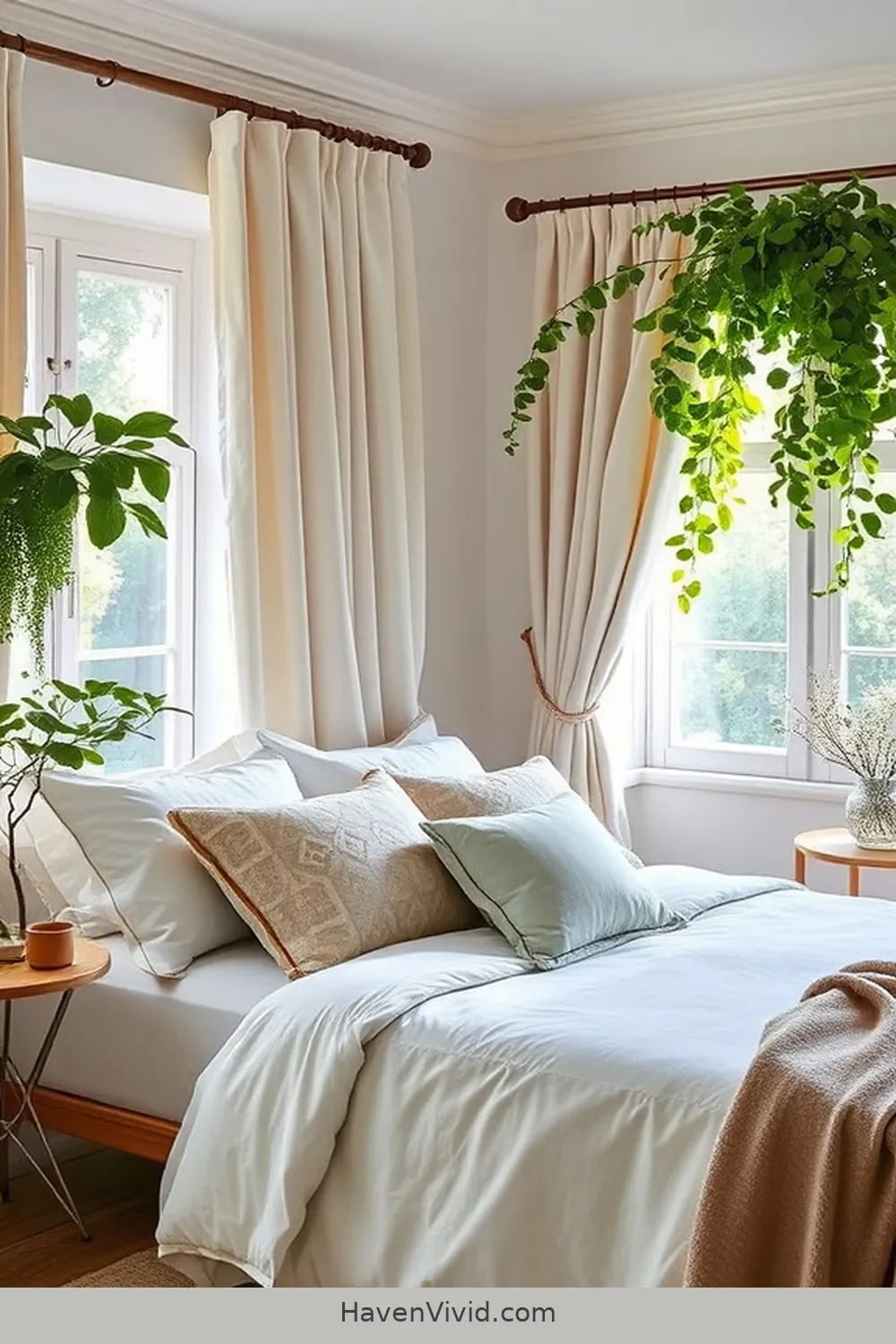
While creating a cozy and eco-friendly bedroom, I’ve found that incorporating organic cotton decor not only adds comfort but also aligns with my commitment to sustainability.
From decorative pillows to stylish throws, organic cotton pieces enhance my space with their soft texture and natural appeal. I love choosing bedding made from organic cotton—it feels luxurious and supports eco-friendly farming practices.
Wall art printed on organic cotton canvas brings a unique touch, creating a warm and inviting atmosphere. Plus, organic cotton rugs add both style and comfort underfoot.
Exploring Sustainable Furniture Options
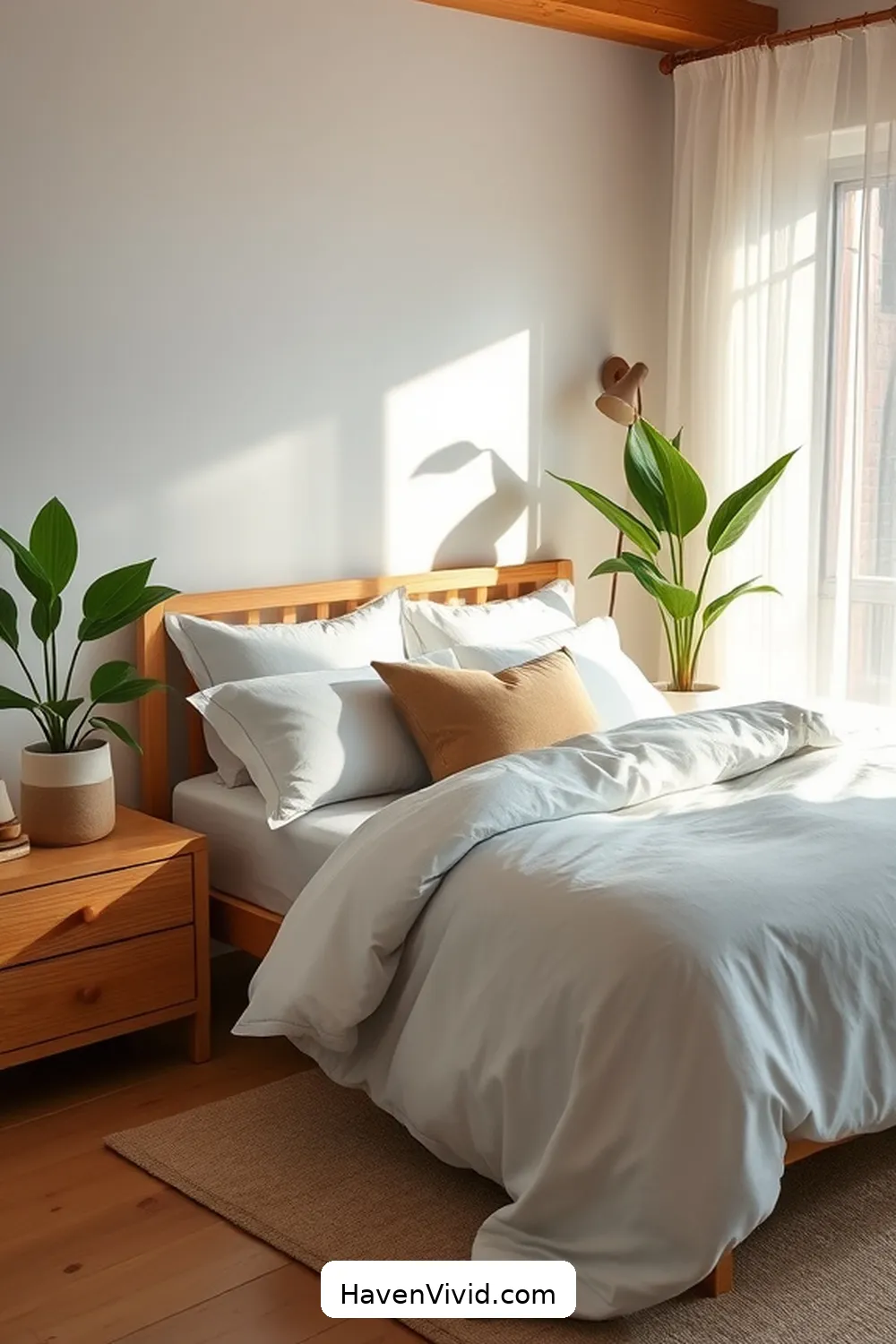
As I explore sustainable furniture options for my bedroom, I’m amazed at the variety of choices that not only look great but also contribute to a healthier environment.
Choosing eco-friendly furniture can transform my space while reducing my carbon footprint. Here are three sustainable options I’ve found particularly appealing:
- Reclaimed Wood Furniture: Using pieces made from reclaimed wood not only saves trees but also adds character and history to my bedroom.
- Bamboo Furniture: Bamboo grows quickly and is incredibly durable, making it a fantastic sustainable choice for modern designs.
- Second-Hand Finds: Shopping at thrift stores or online marketplaces allows me to give pre-loved furniture a new life while avoiding the environmental impact of new production.
These options have inspired me to create a truly eco-conscious bedroom!
Opting for Natural Mattress Choices

After selecting sustainable furniture, the next step is to contemplate what I sleep on every night: my mattress.
Choosing a natural mattress is essential for eco-friendly living. I’ve discovered that options made from organic materials like latex, wool, or cotton offer a healthier choice for both me and the environment.
These mattresses often lack harmful chemicals found in conventional ones, promoting better air quality in my bedroom. I also appreciate how they’re biodegradable, reducing waste when it’s time to replace them.
Plus, many natural mattresses are designed to last longer, saving me money in the long run. Investing in a natural mattress not only enhances my sleep experience but also aligns with my commitment to sustainable living.
Utilizing Organic Cotton Pillows and Sheets
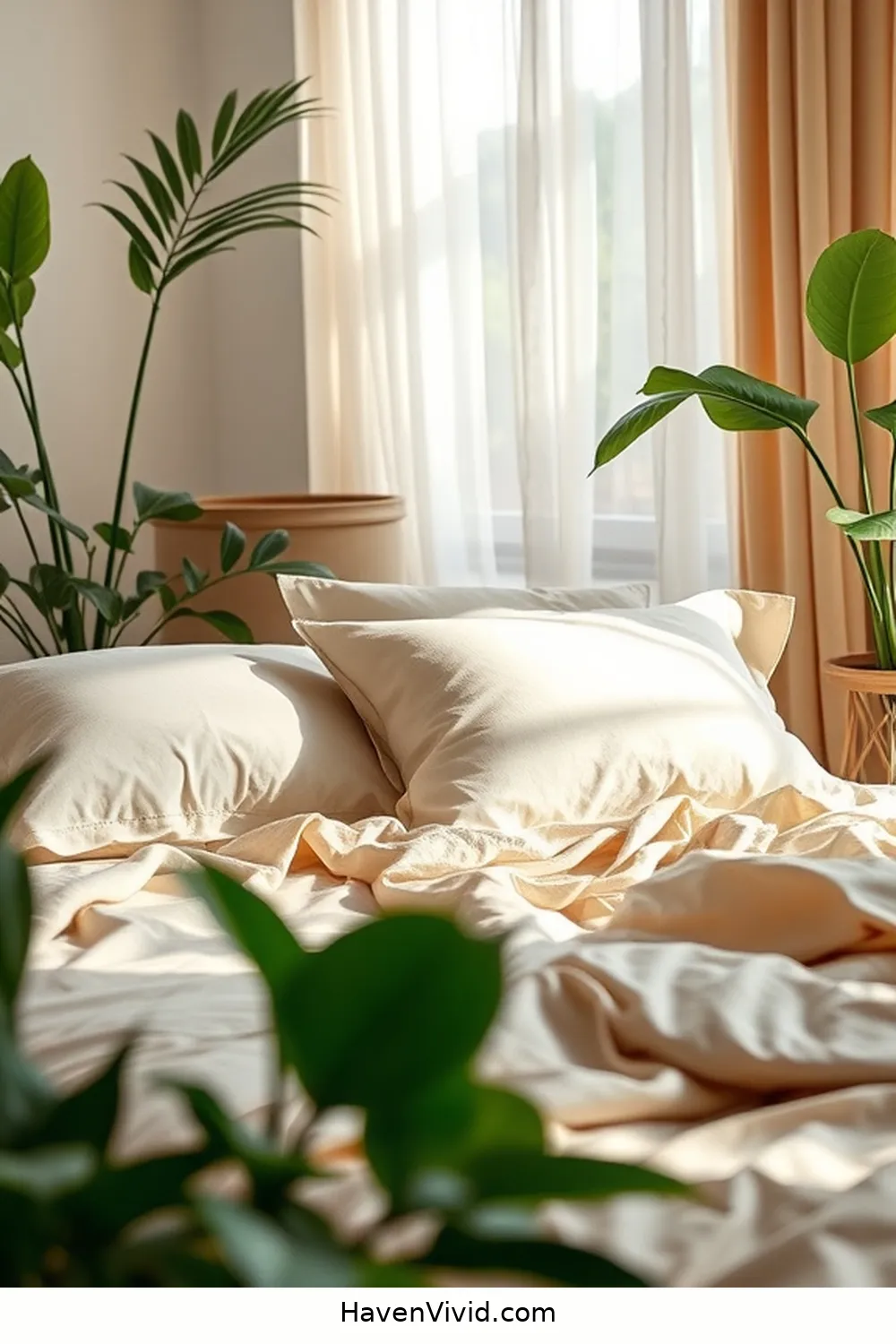
To truly embrace eco-friendly living in my bedroom, I’ve turned my attention to organic cotton pillows and sheets.
These sustainable choices not only improve my sleep quality but also reduce my environmental impact.
Here’s how I make the most of them:
- Choose Certified Organic: I always look for pillows and sheets that feature certifications like GOTS (Global Organic Textile Standard) to guarantee they’re made without harmful chemicals.
- Opt for Breathability: Organic cotton is naturally breathable, which helps regulate my body temperature and keeps me comfortable throughout the night.
- Care Sustainably: I wash my organic cotton linens in cold water and air dry them whenever possible.
This extends their life and conserves energy.
Creating a Green Cleaning Routine
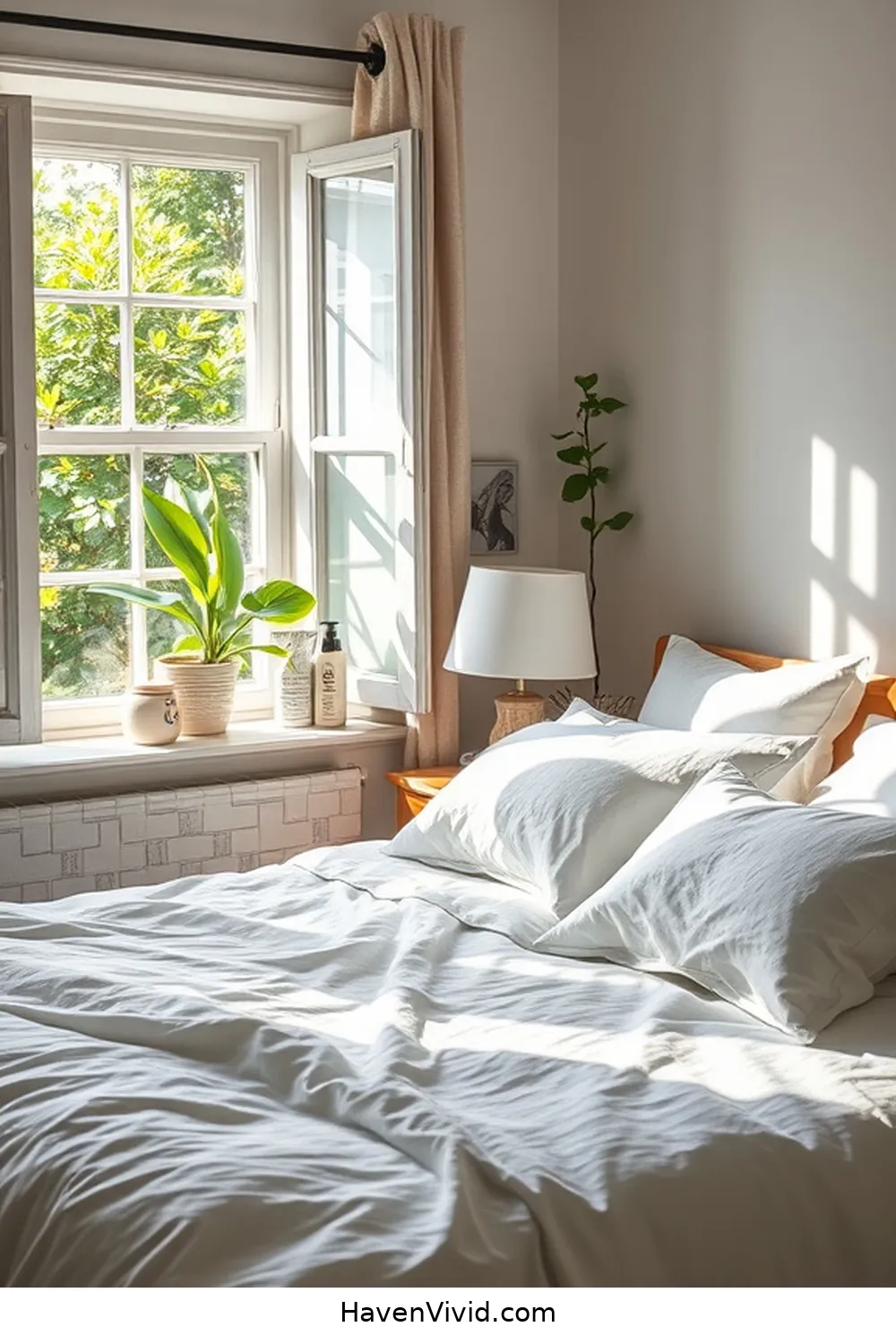
Having established a cozy and eco-friendly sleeping environment with organic cotton pillows and sheets, it’s time to turn my focus to maintaining that space with a green cleaning routine.
I start by using natural cleaners like vinegar and baking soda, which tackle stains and odors without harsh chemicals. For dusting, I grab a microfiber cloth; it traps dust better than traditional options.
When washing my bedding, I opt for a plant-based detergent to keep it gentle on both my skin and the planet. I also make it a habit to wash everything in cold water, saving energy.
Finally, I air out the room regularly, letting in fresh air to maintain that clean, inviting atmosphere.
Adding Indoor Plants for Improved Air Quality

While creating an eco-friendly bedroom, I can’t overlook the benefits of adding indoor plants for improved air quality.
Not only do they enhance the room’s aesthetics, but they also purify the air, making it a healthier space to sleep and relax in.
Here are three great indoor plants to evaluate:
- Snake Plant: It’s low-maintenance and converts CO2 into oxygen at night, perfect for bedrooms.
- Spider Plant: This resilient plant removes toxins like formaldehyde and is safe for pets.
- Peace Lily: It’s beautiful and effective at filtering out harmful chemicals, plus it thrives in low light.
Incorporating these plants can drastically improve your bedroom environment, making it more inviting and eco-friendly!
Eco-Friendly Bedroom Decor Ideas
Implementing Energy-Efficient Lighting

Indoor plants can greatly enhance air quality, but the right lighting is just as important for creating a truly eco-friendly bedroom.
I’ve found that switching to energy-efficient LED bulbs has made a significant difference. These bulbs use up to 80% less energy than traditional incandescent lights, which not only lowers my electricity bill but also reduces my carbon footprint.
To maximize their benefits, I choose bulbs that emit a warm light, creating a cozy atmosphere.
I also make sure to place my lights strategically to highlight my plants and other decor. Using dimmer switches is another great way to customize the brightness while saving energy.
Recycling and Upcycling Bedroom Items
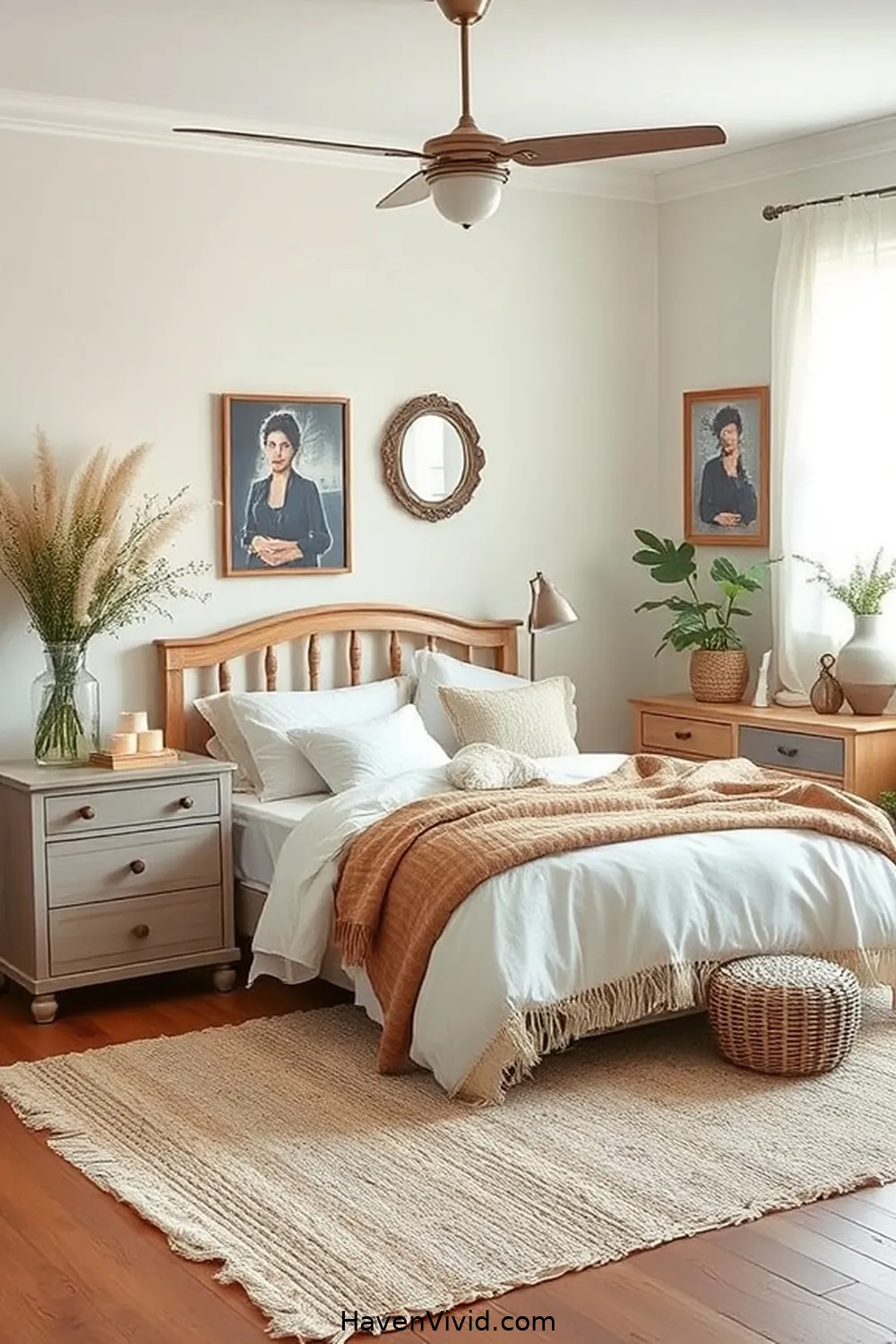
When I realized how much waste accumulates in a bedroom, I knew I’d to take action.
Recycling and upcycling are great ways to reduce clutter and give new life to old items. Here are three simple ideas I’ve tried:
- Old T-Shirts: Instead of tossing them, I turned them into soft rags or even a cozy quilt.
- Mason Jars: I repurpose them as storage containers for small items, like buttons or jewelry, adding a rustic touch.
- Furniture: I’ve upcycled old furniture by sanding and repainting it, transforming it into a stylish piece that fits my aesthetic.
Personalizing Your Eco-Friendly Space
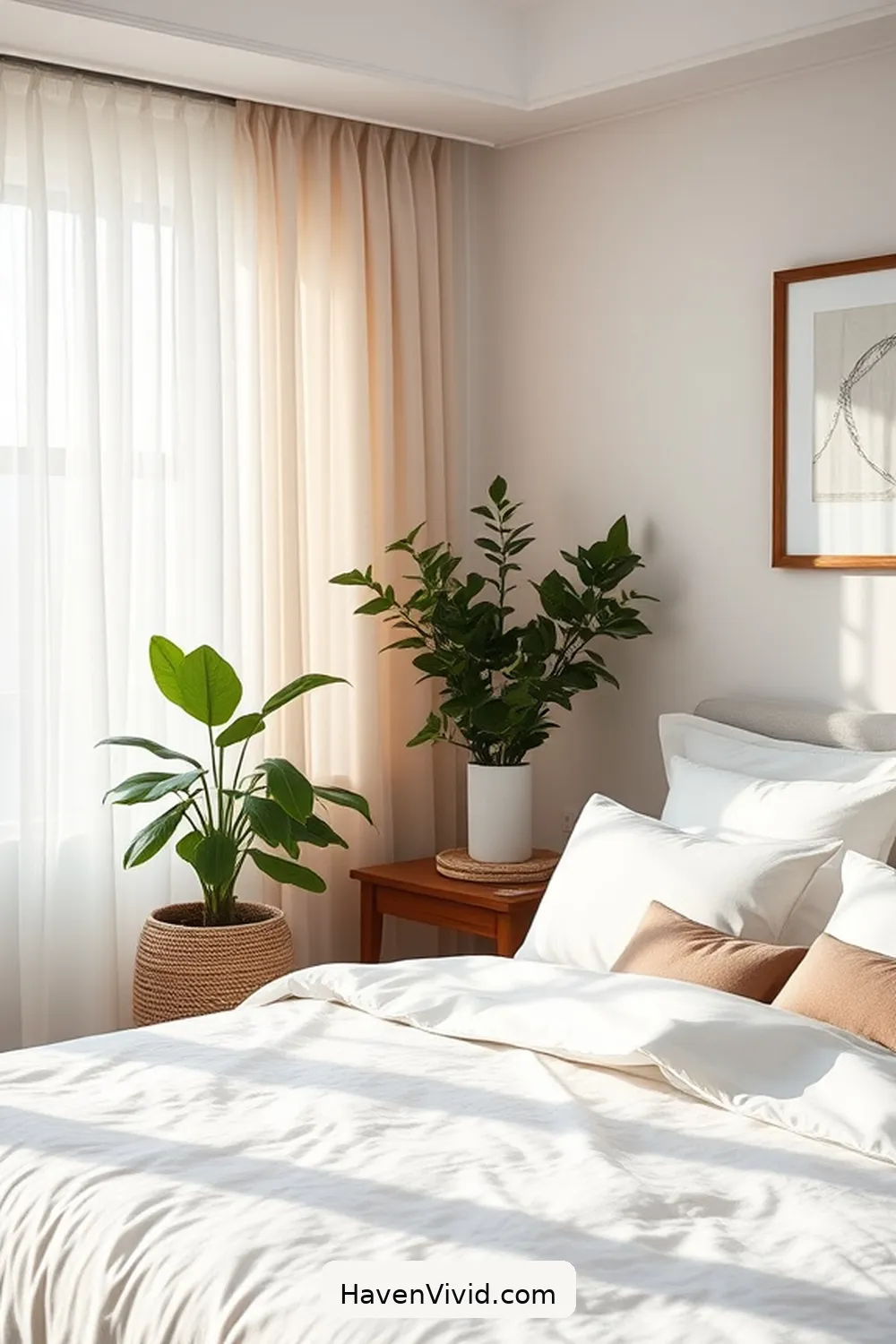
Creating a personalized eco-friendly space in your bedroom can truly transform how you feel in your sanctuary.
I love incorporating elements that reflect my personality while staying sustainable. Start by choosing organic cotton bedding in colors or patterns that resonate with you.
You can also add potted plants; they not only purify the air but bring life to the room.
Consider using reclaimed wood for shelves or decor, adding character and a story to your space.
Hang artwork made from recycled materials to showcase your creativity.
Finally, I suggest using essential oils in a diffuser to create a calming atmosphere.











